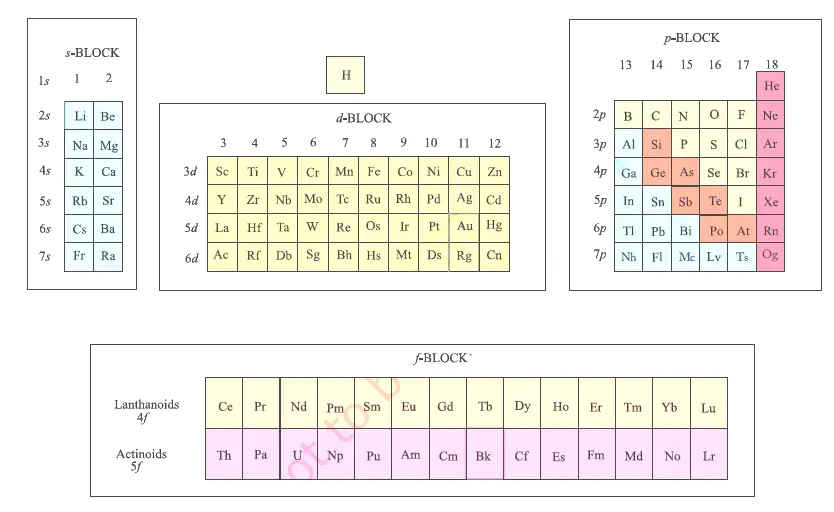
The light can be positioned directly above the arranged cubes to display it’s features, or, it can serve as a handy reading light/night light. The now finished product makes a wonderful accessory. Finally, I added small, LED reading lights onto the bases. These models were then glued to glass bases. I also made wood labels to name the four models. I cut out the elements from one of my Periodic Tables and carefully glued them to the front of the cubes. Labeling the cubes individually was my next step.
Periodic table of elements with blocks series#
– F-block: 30 cubes (the Lanthanide Series on top and Actinide Series below) – D-block: 38 cubes (are also the Transition Metals) – P-block: 36 cubes (these are the elements in Group 13 through Group 18, excluding Helium) – S-block: 14 cubes (6 per Group 1 and Group 2 2 separate cubes for Hydrogen and Helium, which belong to the s-block) For the models of the elements, I designed cylindrical figures by gluing together wooden cubes: By using the element blocks, elements are classified by the last/outermost subshell occupied due to their electron configuration. The four blocks are as follows: s-block, p-block, d-block, and f-block.

I wanted to keep the elements’ arrangement close to that of the Periodic Table, so I went for element blocks. To begin, I considered how I should group the elements. With this in mind, I decided to make this helpful gadget that can be just as pleasant as a decorative ornament. In simple terms, I was inspired by my fondness of making science a part of our everyday life. For my IUPAC Nobelium Contest entry, I made four Periodic Table of Elements reading lights categorized by the elements blocks.


 0 kommentar(er)
0 kommentar(er)
